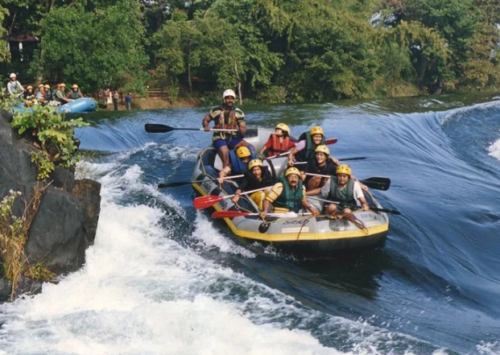Chapora Fort: Where Bollywood meets history and sunset views
Discover Goa’s iconic ruins and panoramic vistas of Arabian Sea

Chapora fort is as much a pilgrimage for film fans as it is a magnet for history buffs, photographers and sunset chasers (Photos: India & You/Garima Sharma)
Chapora Fort, that featured in Hindi film Dil Chahta Hai, offers panoramic sea views, Bollywood charm, and historic ruins, an unmissable Goan landmark blending film, history and breathtaking sunset vistas.

Chapora fort is as much a pilgrimage for film fans as it is a magnet for history buffs, photographers and sunset chasers (Photos: India & You/Garima Sharma)
Perched above the Chapora River in North Goa, Chapora Fort is a site of layered history, cinematic fame and magnificent views. In fact, its rocky ruins and expansive panoramas served as the backdrop for one of Bollywood’s most famous films, Dil Chahta Hai (2001). The fort’s role as a must-see location for tourists looking for both history and nostalgia was solidified by its appearance in the film. The iconic scene where three friends sit atop the fort’s weathered ramparts, gazing at the Arabian Sea, has inspired countless travellers to seek out this hilltop marvel for themselves.
Today, the fort is as much a pilgrimage for film fans as it is a magnet for history buffs, photographers and sunset chasers, a true blend of pop culture and panoramic splendour.

The nearby Vagator Beach is a favourite for swimming, tanning and sampling fresh seafood at beachside shacks
The fort is easily accessible but feels worlds away from the tourist crowds. It is only 10 km from the busy market town of Mhapsa and roughly 20 km north of Panaji, the capital of Goa. Most tourists get there by taxi, rental bike, or local bus, which frequently travels the route between Mhapsa and Vagator Beach and stops near the fort’s entrance. From Vagator Beach, which is roughly 700 m from the shore, hikers seeking a little adventure can ascend a short but steep hill to reach the fort’s gate, which offers hikers unparalleled views and a sense of exploration.
The fort itself, which is made of red laterite stone and has steep walls that rise sharply from the hillside, is a remarkable example of rough, functional architecture. Gun ports, arrow slits and murder holes are dotted throughout these walls, serving as reminders of the fort’s initial function as a defensive outpost. The Adil Shahi dynasty first constructed the site in 1612 under the name Shahpura, which translates to ‘town of Shah’, with the intention of protecting it from Hindu raiders and competing powers.

Early morning or late afternoon are the ideal times to visit because of the gentle light and sparse crowds
The fort changed hands multiple times over the centuries, most notably when it was taken by the Marathas and then by the Portuguese, who rebuilt and enlarged it before abandoning it in 1892. However, most contemporary tourists are drawn to the expansive views rather than the complex history.
From the ramparts, one can look west over the golden crescent of Vagator Beach, east over the mouth of the Chapora River where it meets the Arabian Sea, north across the Chapora River to Morjim Beach and farther down the coast, Ozran Beach. The view, which stretches for miles on clear days, provides a visual feast of azure waters, lush palm groves and far-off fishing villages. Early morning or late afternoon are the ideal times to visit because of the gentle light and sparse crowds.
Due to the popularity of the fort, there is a vibrant atmosphere at sunset when tourists congregate to witness the sky’s flaming hues, which echoes the Dil Chahta Hai movie’s enchantment.

From the ramparts, one can look west over the golden crescent of Vagator Beach, east over the mouth of the Chapora River where it meets the Arabian Sea
There are plenty of exploration opportunities in the vicinity of Chapora Fort for those who choose to stay. While the village of Chapora, directly across the river, provides a taste of traditional Goan life, the nearby Vagator Beach is a favourite for swimming, tanning and sampling fresh seafood at beachside shacks. Adventurers can go fishing, have a picnic on the beach, or just walk the narrow streets that link the fort to the lively neighbourhoods below.
Since the fort itself has few practical amenities as there are no shops or cafes on the hilltop, it is advisable to pack water, sunscreen and a hat for the ascent. The fort maintains its wild, untamed beauty even during the busiest travel months of October through February, when the weather is relatively cooler and dry.
Whether retracing the steps of a favourite film characters, seeking out the perfect sunset, or simply looking for a quiet spot to reflect, this hilltop stronghold delivers every visitor an experience that is both unforgettable and distinctly Goan.









